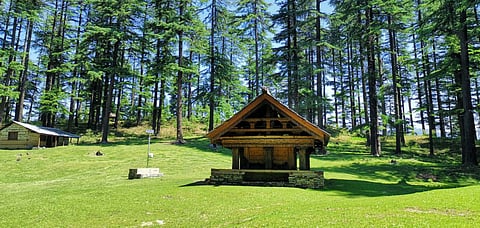

Pilak, Tripura
Terracotta plaques, stone figurines, stupas, and many other findings have been discovered at this lesser-known destination in southern Tripura. Located in the heart of Belonia, Pilak has religious figures from the 8th and 9th centuries, including images of the Bodhisattvas Avalokiteshvara and Narasimhan. These pictures speak of the heterogenous creeds and sects of Hinduism and Buddhism. The sculptures appear to have similarities with the architectural styles of the Pala and Gupta rulers of Bengal. These figures, rock-cut images, can be spotted scattered in various places in the area. The images also seem to have the influence of Arakan, Myanmar, giving visitors a glimpse of its diverse roots. A three-day archaeological festival is also organised in the area every year. And reports suggest the site is being excavated further to delve into its past.

Bahu Village, Himachal Pradesh
The beautiful Himalayan state is known for its many valleys and towns however, only a few know about Bahu village, which boasts ancient shrines and hiking trails. Lying in the Banjar tehsil of the famous Kullu town, the village houses architectural heritage, with Sheshnag Temple as one of its popular tourist hotspots. Another tourist attraction is the road safety shrine constructed of old tyres and vehicular parts, standing out for its unique build. As you walk around, spot the village houses carved out of wood and stone, with stone-tiled roofs. Along the way, you will also find statues, human-like figures adding to the village's architectural wealth. And when in the hills, one must take advantage of the hiking experience. With several trekking trails, Bahu offers a perfect blend of history and adventure. Start with a scenic hike to the Baloo Nag Temple and delve into nature's wonders as Himalayan greens surround the wooden shrine.
Maluti, Jharkhand
A group of 72 terracotta shrines, Mauliksha temples, today stand in weary condition and have reportedly been declared an endangered cultural heritage site by the California-based Global Heritage Fund. With the temple infrastructure requiring revival and repair, Goddess Mauliksha is the temple's main deity, who, as per local legends, has been overlooked in Hindu scriptures. Located in Maluti village, these temples are said to have been built as edifices to Bengal's Pala rulers, with scenes from Ramayana and Mahabharata epics also chiselled on them. Initially 108 in number, the temple tally is reduced to 72 owing to a lack of preservation efforts.
Kharu, Ladakh
Amidst the high mountain passes of Ladakh lies the small town of Kharu, known for its rock paintings. Also known as petroglyphs, these unique structures are believed to have been created between the second and third millennium BCE, telling stories of past civilisations. About 500-odd petroglyphs are preserved in the Domkhar Rock Art Sanctuary, 160 kilometres from Leh. Besides Kharu, Khaltse and Tangtse also boast of ancient rock art with images of animals chiselled on them. The high point of these paintings is the script, which appears to have similar to the one used by tribes of Central Asia.
Cover Photo Credit Shutterstock
